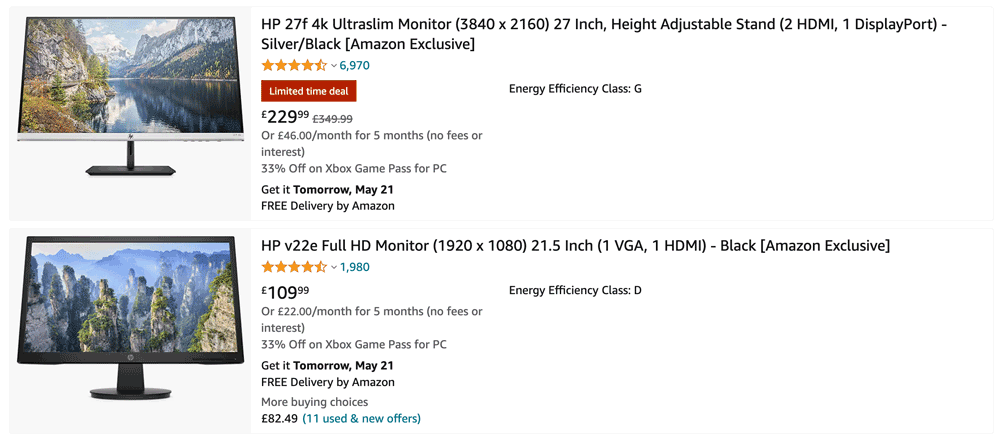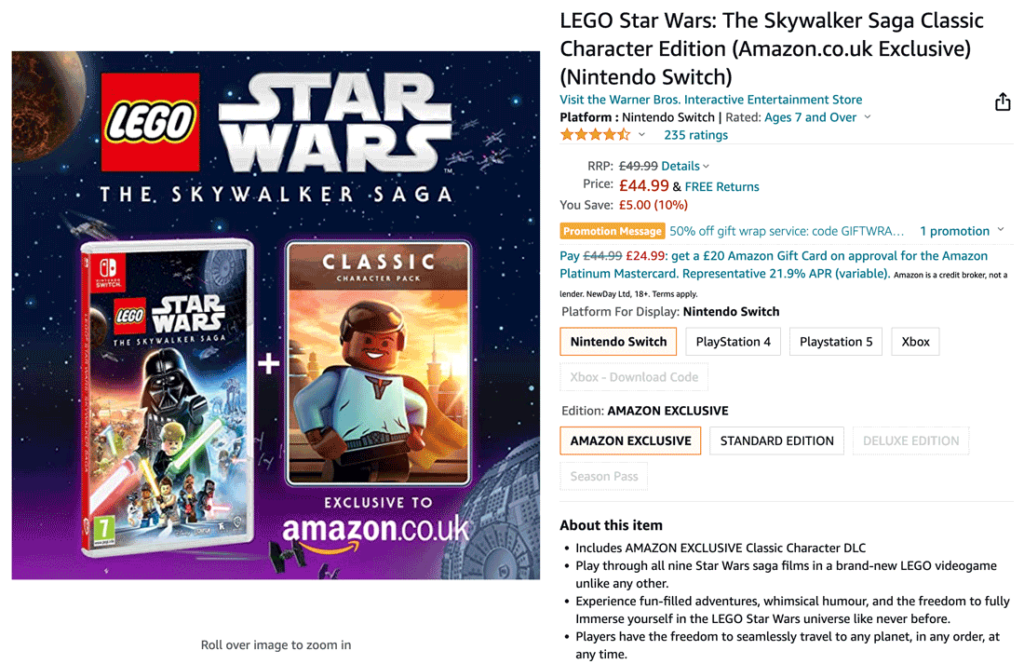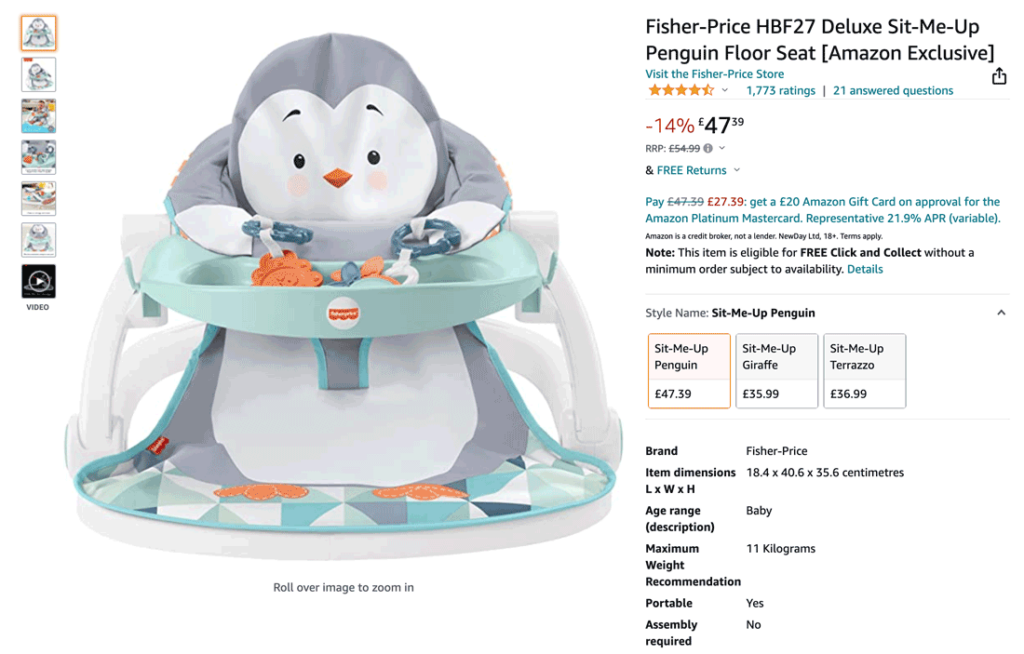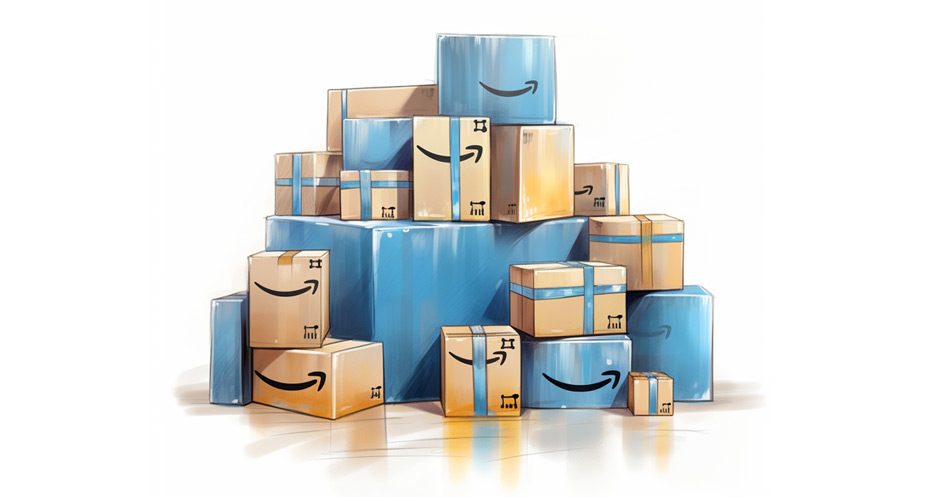Learn how to launch exclusive products with Amazon and avoid common pitfalls most vendors encounter along the way.
If you’re reading this article, chances are you have had enough of Amazon’s price matching algorithm. To escape it, many brands consider launching exclusive products with the online marketplace.
But what sounds simple on paper often turns into a complex undertaking: Internal stakeholders need to be convinced to invest time and resources to develop these products. Only to find that Amazon might not consider them exclusive and match them to comparable offers in the market.
So in this article, I will outline exactly how Amazon defines exclusivity and what vendors need to consider when thinking about launching exclusives on its marketplace.
This article will cover:
- What are exclusive products?
- Why launch exclusive products?
- What Amazon considers exclusive
- Common pitfalls to avoid
- Examples of Amazon exclusives
- FAQs about product exclusives
What are exclusive products?
Exclusive products describe listings that are only available to Amazon customers. These items are often a variation of a brand’s existing top sellers or come with additional features that customers can access when purchasing the product.
Many well-known brands such as Bosch and Hewlett-Packard have already launched exclusive products on the Amazon marketplace to differentiate their portfolio and target savvy customers. We’ll dive into more concrete brand examples further down below.

Why launch exclusive products with Amazon?
The benefits of launching exclusive products on Amazon are wide-ranging. However, the most common reasons cited by vendors are cost savings through customised and ecommerce-ready packaging, and the ability to avoid Amazon’s price matching.
Amazon also usually includes these products in its Exclusives Programme. While admission into the programme comes at a negotiable cost, vendors can benefit from improved visibility in search results and Amazon’s support in limiting the distribution of eligible products.
Especially the latter should not be underestimated, as a lose distribution is precisely what most brands struggle with when selling on and to Amazon.
Related: How to Increase Your Vendor Margins with Amazon
What products Amazon considers exclusive
When launching unique products with Amazon, it’s important to keep the online retailer’s customer obsession in mind. Taking shortcuts won’t do your team any favours.
Amazon is known for dismissing the exclusivity of a product if it doesn’t provide a clear differentiation from the perspective of the end customer.
So if you’re thinking of launching an exclusive range on the marketplace, keep in mind what Amazon looks at when assessing the listing:
- Is the product sold outside Amazon?
- Does it have a Unique Selling Proposition?
- What are the added product features?
- Is the product material different to non-exclusive variations?
- Is the recipe or ingredient mix at least >25% different?

Knowing that Amazon generally classifies differentiated products as exclusive will give many business leaders peace of mind. But let’s also take a look at what the online retailer does not consider an exclusive:
- Colour variations
- Smaller or larger pack sizes
- Undifferentiated product bundles
- Different packaging materials (e.g, SIOC, FFP)
- Undifferentiated recipe or ingredient mix (<25% difference)

The reason why larger pack sizes or colour variants may not be considered exclusive is the price transparency in the online channel. Amazon wants to maintain customer trust and will refer to other variants to set competitive prices for these items.
If you’re unsure whether your product idea meets Amazon’s criteria for exclusivity, you should contact your Vendor Manager for an initial assessment.
Related: How to Increase Your Average Selling Price (ASP) on Amazon
Common pitfalls when launching exclusive Amazon selection
Vendors looking to develop an exclusive Amazon range should avoid three common pitfalls:
- Relying on data support from Amazon,
- ignoring commercial barriers, and
- incorrectly distributing margins.
Let’s take a closer look at these:
Mistake 1: Relying on data support from Amazon
It may sound like a paradox for a tech company obsessed with metrics and KPIs:
But there is a significant lack of data support from Amazon when brands try to gather intelligence to develop exclusive products.
While Vendor Managers have access to relevant category and customer insights, they’re restricted from sharing them even with their largest suppliers.
On the other hand, brands receive hardly any valuable data via their Brand Analytics in Vendor Central.
So instead, brands should partner with their customer insights teams and market research agencies to ensure the successful development of exclusive products that resonate with customers.
Mistake 2: Ignoring commercial barriers
Once Amazon learns that a brand has developed an item for the marketplace, its buyers will likely request funding to display the listing in the Amazon Exclusives Store.
They typically ask for a 5% flat fee, calculated on the Net Receipts of a vendor. Note that the term may span across all product sales to Amazon, including any non-exclusive ASINs.
While the fee is negotiable and subject to the broader margin structures on the vendor account, brands should have this conversation with Amazon before developing an exclusive range to avoid unpleasant surprises.
If you need help in negotiating your Exclusives Programme access with your Vendor Manager, get in touch. I offer tailored advice that will expedite your progress.
Mistake 3: Incorrectly distributing margins
One of the most common mistakes among suppliers is to transfer the entire margin of an exclusive product to Amazon. According to the principle: if the buyer gets the margin, the product will sell itself.
Although the truth is hard to read, this is not going to happen. Amazon buyers do not have access to advertising tools and cannot promote products for more than a few weeks per year.
So passing too much margin to Amazon leaves vendors without the budgets to drive sales to their exclusives through Advertising and DSP campaigns.
A better way is to target a Net PPM that is 3 to 5% accretive at account level but keeps enough room for the brand to promote the listing.
Exclusive product examples on Amazon
Need inspiration to develop exclusive products for Amazon? Let’s take a look at some good examples:
Example 1: Lego Star Wars
Lego is known for its licensing partnership with Disney all around StarWars. In recent years, the company has also accelerated its ambitions with the Amazon marketplace.
While keeping production costs low, Lego differentiated its offering by adding codes to its games that unlock characters only available to Amazon customers.
This not only allows them to charge a higher price than on their non-exclusive products. It also creates a good value proposition for end customers.
Why it works:
- Strong brand resonance with Lego and StarWars
- Unique selling proposition as the figures stimulate collector’s value
- Cost-effective product feature upgrade (character code)
- Avoids price matching due to differentiated offering

Example 2: Fisher-Price
Fisher-Price manufacturer Mattel has gone down a slightly different route. They launched a variation of their Sit-Me-Up product that differentiates itself enough from the cheaper available alternatives.
Why it works:
- Variation differentiates itself from the non-exclusive “Giraffe” alternative
- USP through the eyes of end customers (and children)
- Cost-effective alteration of the base product
- Benefits from sales rank of non-exclusive variations

FAQs
Want more answers? Here are some frequently asked questions about launching exclusive products with Amazon.
Your Vendor Manager will most likely not help you with your venture to launch exclusive products on Amazon. Unlike other retailers, Amazon buyers don’t spend much time looking for opportunities to launch new products in their category. You might get lucky and work with a dedicated Vendor Manager, but you shouldn’t rely on that.
The Net PPM of an exclusive product should be based on the average of your account margin over the last twelve months and be accretive by 1-3%. Don’t pass more margin on to Amazon, as it won’t accelerate sales. Instead, keep the margin to have the budget to invest in marketing and advertising campaigns that will accelerate the sales of your product.
If Amazon price matches your listing, it’s most likely because they don’t deem it as exclusive. Most brands mistake a larger pack size with an exclusive listing, leading to price erosion down the road. If you think it’s a genuine Amazon mistake, you can ask them to review the listing.
Amazon Exclusives is a programme that focuses on products sold solely on the Amazon marketplace. Vendors can initiate discussions with their Vendor Manager to understand the latest requirements for participation. Amazon aims for a fixed fee of 5% based on net receipts, but this is negotiable (support available through my services).
Depending on the legal requirements in your country, you have certain options to handle the request. You may want to talk to your legal department or a solicitor that is specialised in the setup of selective distribution agreements.
Final thoughts
Exclusive products can increase your profit margins with Amazon if done right. But knowing what Amazon classifies as exclusive is critical to avoid costly mistakes.
If you need help with your Amazon portfolio strategy, get in touch! I offer industry-leading advisory services to help your teams get it right on the first try.

